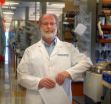(Press-News.org) A team of scientists at the CSIC has shown that temperature can play a critical role in the control of splicing. The team led by Josep Vilardell, ICREA scientist at the CSIC's Molecular Biology Institute of Barcelona, has demonstrated that temperature, through its effects on RNA structure, can control how the genetic information will be processed. The results of this work are published this week in Molecular Cell.
Hiding intronic cues
For some time, scientists have been trying to understand how the spliceosome -the molecular 'machine' responsible for splicing- works to generate a mRNA (messenger RNA) with capacity for generating the right protein. During splicing, the spliceosome selects internal sequence fragments, in a process where it cuts the RNA genetic sequence at specific points: the endings of the introns. Then, it joins the fragments to generate the new mRNA.
It is known that errors in splicing can be lethal. The question is, Vilardell points out, "how does the splicesome choose the right intronic endings? We have tried to find out an answer with the yeast Saccharomyces cerevisiae. It has a small and well characterized genome, with a reduced set of known introns. This helped us to simplify our approach".
With their work, researchers have found that within a small range of temperature, from 23 to 37 C degrees, some yeast RNAs change their structure, either hiding or showing particular sequences. As the splicesome uses all the cut points that are accessible, but not the ones that are hidden, the result is that the intron is differently recognized, which eventually will generate two different proteins.
Scientists have shown that temperature and the inherent RNA flexibility allows for "an autonomous strategy of control of RNA processing. It was known that temperature affects RNA structure, and now we find that this has important consequences for the splicing".
¿What are the implications of this alternative RNA processing? Vilardell explains that "in the yeast gene where we have found this, the hypothesis is that this phenomenon affects the stability of the encoded protein or its capacity for interacting with other molecules."
Now, adds Vilardell, "we are very interested in studying what happens in other, more complex, organisms. There is no reason to think that this strategy is not used in mammals, where the effects could be more relevant from the health perspective".
There are situations where our organism changes temperature, and a specific splicing for these situations could be taking place. Maybe the most obvious example is when we have a fever, says Vilardell. Some RNAs may have acquired the capacity to respond to subtle temperature variations through small structure changes. In addition, there are biological processes that need a specific temperature (such as the spermatozoid production) and optimal genetic expression could use a proper folding of the RNAs of the genes that are specifically expressed.
Another scenario is centered on the need of a quick adaptation of gene expression to sudden changes in temperature. "This implies the generation of new protein isoforms, as well as of RNAs that have lost their coding potential, avoiding the synthesis of proteins that could be harmful under these conditions. Our data show that this quick response can be mediated by the RNA structure itself".
### END
Temperature controls the genetic message
2011-09-19
ELSE PRESS RELEASES FROM THIS DATE:
Newest cancer therapies multi-task to eliminate tumors
2011-09-19
AUGUSTA, Ga. – Some of the newest therapies in the war on cancer remove the brakes cancer puts on the immune system, Georgia Health Sciences University researchers report.
These immunotherapies, such as CTLA4, strengthen the immune system's attack on cancer by keeping apart two proteins that prevent key immune cells called T cells from activating.
Research featured on the cover of the Journal of Immunology suggests that these therapies also keep tumors from benefitting from IDO, an enzyme used by fetuses and tumors alike to suppress the immune response.
"This is ...
New threat closes in on iconic Galápagos wildlife
2011-09-19
Renewed vigilance over the biosecurity of the Galápagos Islands is needed, based on new research on the risk posed by West Nile virus.
Scientists from the Zoological Society of London (ZSL), the University of Leeds and the New York State Department of Health, together with the Galápagos National Park Service and University of Guayaquil, have been studying the disease threat posed by Islands' mosquito populations. They have discovered that a species of these biting insects is capable of transmitting West Nile virus, a potentially dangerous disease for the archipelago's ...
Quantum behavior with a flash
2011-09-19
This press release is available in German.
Just as a camera flash illuminates unseen objects hidden in darkness, a sequence of laser pulses can be used to study the elusive quantum behavior of a large "macroscopic" object. This method provides a novel tool of unprecedented performance for current experiments that push the boundaries of the quantum world to larger and larger scales. A collaboration of scientists led by researchers from the Vienna Center for Quantum Science and Technology (VCQ) at the University of Vienna report this new scheme in the forthcoming ...
CONRAD presents results of pivotal contraceptive study at Reproductive Health 2011
2011-09-19
Las Vegas, NV—CONRAD, a leading reproductive health research organization, will announce results of the SILCS Diaphragm contraceptive effectiveness study September 17th at the Reproductive Health 2011 Conference in Las Vegas, Nevada. The two-year study of 450 U.S. women implemented at six clinical sites in the U.S. showed that effectiveness rates of the new single size, contoured diaphragm are similar to traditional diaphragms. In addition, SILCS was shown to be easy to use and comfortable to wear. The single-size design eliminates the need for a fitting, which should ...
T cells making brain chemicals may lead to better treatments for inflammation, autoimmune diseases
2011-09-19
MANHASSET, NY -- Scientists have identified a surprising new role for a new type of T cell in the immune system: some of them can be activated by nerves to make a neurotransmitter (acetylcholine) that blocks inflammation. The discovery of these T cells is novel and suggests that it may be possible to treat inflammation and autoimmune diseases by targeting the nerves and the T cells. The study was published this week in Science.
"The discovery that 2 percent of T cells can make acetylcholine under the control of nerves gives a new insight into how the nervous system regulates ...
Bold Earth Teen Adventures Adds Diversity With Teens From Over 50 Countries for Summer 2011
2011-09-19
Bold Earth Teen Adventures is seeing an increase in international interest for student travel as teens from outside the USA grew to represent 25% of their summer 2011 trips. International students are enrolling at a high rate, and this summer marks the first time that Bold Earth welcomed students from new countries including China, Japan, Korea, Iceland and Nigeria.
"Summer 2011 opened up Bold Earth to a new level of diversity that we're so proud of," said Abbott Wallis, President of Bold Earth. "Teens from all over the world are craving these rich experiences. ...
A wild and woolly discovery: FSU scientist's Tibetan expedition ends with prehistoric find
2011-09-19
Yang Wang is known for conducting complex research using highly sophisticated equipment. Yet the Florida State University geochemist also has spent days hiking through the remote outback of Tibet and camping in the foothills of the Himalayas — all in the name of scientific discovery.
Because of that unique mix of skills, Wang was chosen to take part in a team of researchers that uncovered the oldest prehistoric woolly rhino ever found. A paper describing the team's discovery was just published in Science (http://www.sciencemag.org/), a prestigious journal established ...
Pitt team finds molecular evidence of brain changes in depressed females
2011-09-19
PITTSBURGH, Sept. 16 – Researchers at the University of Pittsburgh School of Medicine have discovered molecular-level changes in the brains of women with major depressive disorder that link two hypotheses of the biological mechanisms that lead to the illness. Their results, published online this week in Molecular Psychiatry, also allowed them to recreate the changes in a mouse model that could enhance future research on depression.
Although women are twice as likely as men to develop depression and have more severe and frequent symptoms, very little research has focused ...
Sound Design by PopMark Media's Studio Unknown for "Lovely Molly" Receives Praise
2011-09-19
The sound design of the feature film, "Lovely Molly" (Amber Entertainment, Haxan Films), which debuted at the Toronto Film Festival on Wednesday, September 14th, is receiving high praise from industry bloggers. PopMark Media's Sound Division, Studio Unknown, was responsible for the full sound design package of the film.
Directed by Eduardo Sanchez, known for his 1999 horror, "The Blair Witch Project," "Lovely Molly" centers on a troubled young woman and the evil power that exists inside her. The film relies heavily on sound for story support. ...
Unknown ocean bacteria create entirely new theories
2011-09-19
The earth's most successful bacteria are found in the oceans and belong to the group SAR11. In a new study, researchers from Uppsala University provide an explanation for their success and at the same time call into question generally accepted theories about these bacteria. In their analysis they have also identified a rare and hitherto unknown relative of mitochondria, the power stations inside cells.The findings were published in two articles in the journals Molecular Biology and Evolution and PLoS One in the last week.
"The huge amounts of DNA information now being ...



